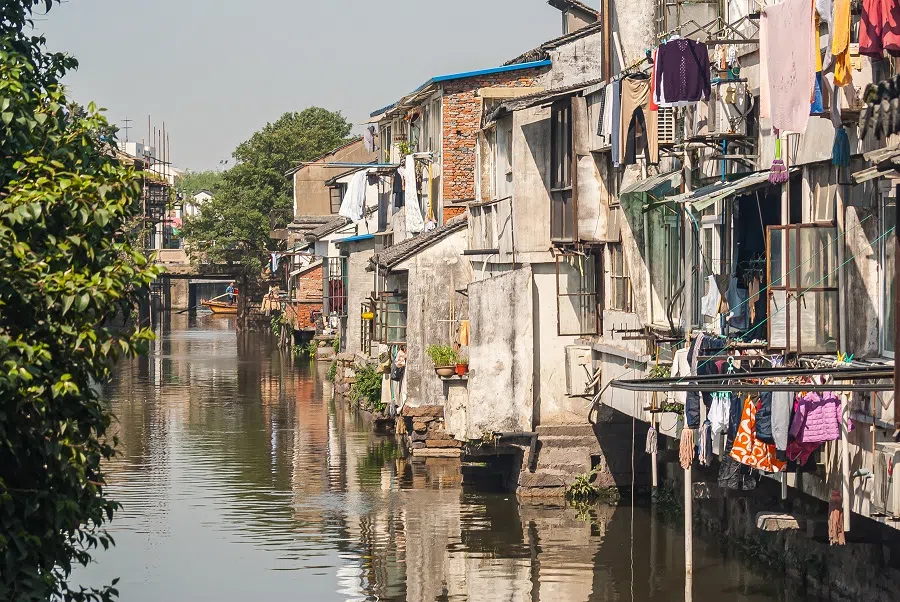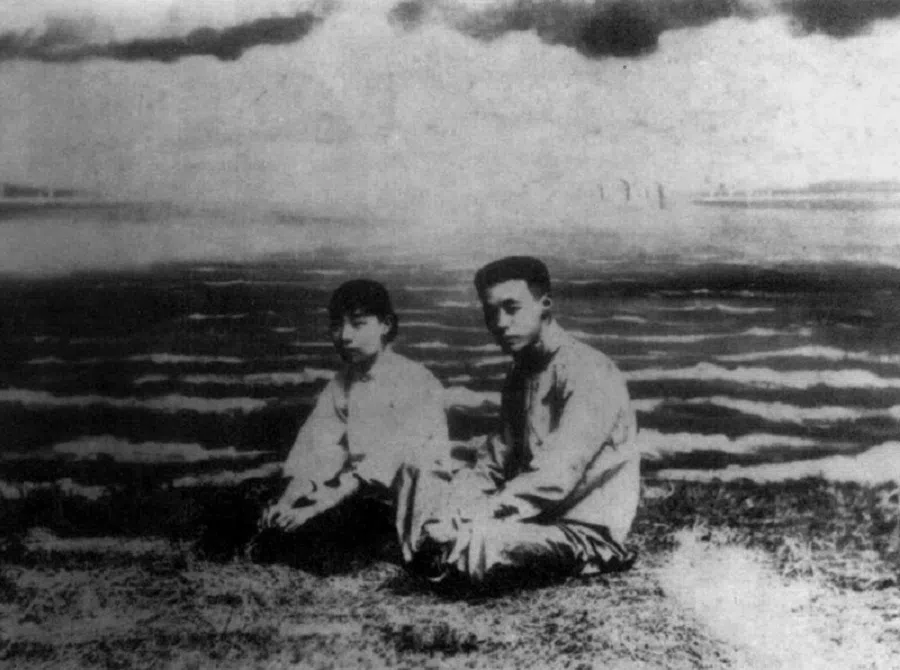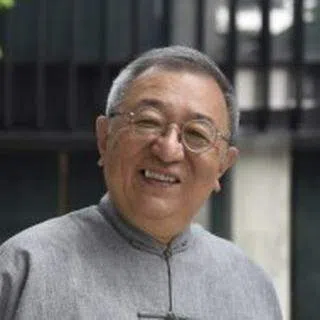Diplomat, book addict, concubine and sage, all in an old alley of Suzhou
In one of his carefree walks down an alleyway in Suzhou, cultural historian Cheng Pei-kai discovers the old studio of Huang Pilie, renowned book collector of the Qing dynasty. But that's not all. The former abodes of diplomats, concubines, academics and many more lie hidden in Xuanqiao Lane and its arteries. What stories will he find with each meander?

When I was living in Suzhou, I looked forward to getting up every day. Even if I didn't head out early enough to have toutangmian (头汤面, lit. head soup noodles), I could enjoy a leisurely stroll around Pingjiang Road. Standing on the time-honoured flagstone road, empty and tranquil in the early morning, I would admire the flowing stream by the roadside or observe how the flowers and trees changed with the seasons.
From cheery yellow winter jasmines, swaying emerald green willows, baby pink cherry blossoms and blooming peach blossoms to purple wisteria flailing in the wind at the end of spring; vibrant red pomegranate flowers in early summer; green mulberry, catalpa, camphor, Siberian elm trees flanking the road in midsummer; maple trees turning red in the autumn; and wintersweet scents in the winter - each season's landscape piqued a poet's senses.
A few years ago, I discovered a noodle restaurant at Jiuxueqian Street (旧学前) by Lindun Road (临顿路). It serves noodles shaped like a crucian carp's back topped with stewed wild swamp eel. The combination is as refreshing as sweet osmanthus flowers blooming on a bright autumn's day and has an intoxicating aroma. I've been addicted to it ever since I tasted it.

During my daily morning walks, I would head southwards along Pingjiang Road and cross an unmarked stone bridge into a narrow old alleyway. After crossing the traffic light at the intersection of Lindun Road, a bowl of delicious noodles would be waiting for me. That was how I would start each relaxing, happy day.
The storied Xuanqiao Lane
This narrow alleyway was about 400 metres long and looked pretty shabby and deserted. Just like the small stone bridge, it reminded me of the left-behind elderly in the deserted mountain villages in remote regions.
I still remember the first time I walked through the lane. Low-rise houses were on either side. I was immediately reminded of Yan Yuan, Confucius' favourite disciple, who lived with only the bare essentials all his life. If he were still alive, I reckon he would have lived in one of these houses too.
As I walked further down, I noticed a white wall that was cordoned off. It had no windows or doors, and stretched a hundred feet deep. I was surprised and thought perhaps a rich family once lived in the depths of this alleyway and rarely stepped out? Perhaps on the other side of the wall was a verdant garden and courtyard with ornate buildings? It was hard to guess who lived there. Then, I noticed a majestic entrance with a closed gate to the mysterious place. It was the ancestral hall of the illustrious Pan family.

Not far off in the distance were whitewashed walls with a plaque indicating that an eminent figure of Suzhou once lived here. It read: "Huang Pilie: Studio of a Hundred Song Books". Ah, was this the former site of Qing dynasty book collector Huang Pilie's private library?
A man dedicated to his books
Huang (1763-1825) was the most famous book collector during the Qianlong-Jiaqing period of the Qing dynasty. He was a true book fanatic, whose eyes would twinkle at the sight of manuscripts and documents. He collected over 200 books from the Song dynasty in his lifetime, and had one of the most outstanding private collections of books back then. In the seventh year of the Jiaqing Emperor's reign (1802), he built a library dedicated to manuscripts from the Song dynasty and left behind the famed name of "a Hundred Song Books" in the history of Chinese book collections.
I stared at the plaque from the alleyway and was reminded of what Ye Changchi said of Huang in Annalistic Bibliotheca Poem (《藏书纪事诗》): "As long as he still had one breath, he dedicated it to his books. Demonic, addicted and possessed." Almost two centuries have passed since Huang's death. His library is now gone and nobody knows exactly the whereabouts of his books. Only the plaque and the melancholy of history remain on this dilapidated alley.
As I walked further down the lane, the path opened up to a well-lit area. The alleyway suddenly seemed spacious with ancient trees towering over each side of the lane. A black plaque with gold words reading "The Former Residence of Hong Jun (洪钧故居)" was well-hidden behind the sprawling branches of a century-old pine tree. The black door of the residence looked impressive and had the grandeur of a scholar-official's house. While the door was locked and the extravagance of a rich man kept away from prying eyes, one could imagine that Hong Jun (1839-1893) - a Chinese diplomat during the Guangxu Emperor era who served as an emissary to Russia, Austria, Germany, and the Netherlands, and later became vice-minister of war and person-in-charge of the Prime Minister's Office - must have lived a prosperous life behind those doors.
Hong's concubine Sai Jinhua, who accompanied him on his overseas missions and gained prominence in the upper class of European society, also lived in the West Wing of the residence's fifth independent compound. She enjoyed walking in the gardens of the residence and lived an affluent and carefree life until Hong passed away. After she left Suzhou's Xuanqiao Lane, she went to Beijing to become a courtesan again and was said to have fallen into the embrace of German military officer Marshal Alfred von Waldersee. It was rumoured that she saved Beijing during the Relief of Peking in 1900, but of course, these stories have nothing to do with this narrow alley.

Following the footprints of the ancients
Ever since I discovered that so many wonderful stories were hidden in this alleyway, I slowed down and paid attention to the footprints that the ancients left behind. Academics Ye Shengtao and Gu Jiegang (1893-1980) of the Republic of China era lived here when they were young as well. I made a special trip hoping to find their former residences, but my efforts were futile. In particular, Gu's house is situated within the Baoshu garden (宝树园) that his ancestors built in the late Ming and early Qing dynasties. Generations of the family lived there and it was also where Gu was born. In 1931, Gu's father spruced up the rundown Baoshu garden and rebuilt some houses, which became officially known as the former residence of Gu Jiegang, and which is also conserved as a historic site. It should have been easy to find, but I failed every time I tried to find it.
Gu's magnum opus, the seven-volume Gushi Bian (《古史辨》, Debates on Ancient History), was a major sourcebook when I studied Chinese ancient history back in university. Back then, the Taiwanese government branded Gu a follower of the Communist Party and thus banned Gushi Bian. I pored over the text with a few of my classmates from the History Department and thus formed a deep impression of Gu. I later found out that he was collating Suzhou folk songs with writer-poet Yu Pingbo and was promoting folk literature research, which spearheaded the preservation of intangible cultural heritage. I thought to myself: if I managed to find his former residence, it would be my little token of appreciation for an ancient sage that I greatly admired and learned a lot from. Alas, I never found his former residence no matter how hard I tried.

Recently, I found some information about famous persons from Suzhou and finally realised that Gu's former residence was not in Xuanqiao Lane but on another lane parallel to the south side of the alley, to the south of Gujia Bridge (顾家桥) across the dredged river. Ah, once I realised its location, I found Gu's former residence easily, because there are only two stone bridges over the river ditch to the south of Xuanqiao Lane.
A while back, a group of Taiwanese academics visited Suzhou and I brought them to have a bowl of eel noodles. We also took the opportunity to visit historic sites and passed by Xuanqiao Lane. Across the first stone bridge on the south, a massive house with white walls and black tiles could be seen. Aha, that is the former residence of Gu Jiegang.
This article was first published in Chinese on United Daily News as "蘇州懸橋巷".

![[Big read] Paying for pleasure: Chinese women indulge in handsome male hosts](https://cassette.sphdigital.com.sg/image/thinkchina/c2cf352c4d2ed7e9531e3525a2bd965a52dc4e85ccc026bc16515baab02389ab)


![[Big read] How UOB’s Wee Ee Cheong masters the long game](https://cassette.sphdigital.com.sg/image/thinkchina/1da0b19a41e4358790304b9f3e83f9596de84096a490ca05b36f58134ae9e8f1)
